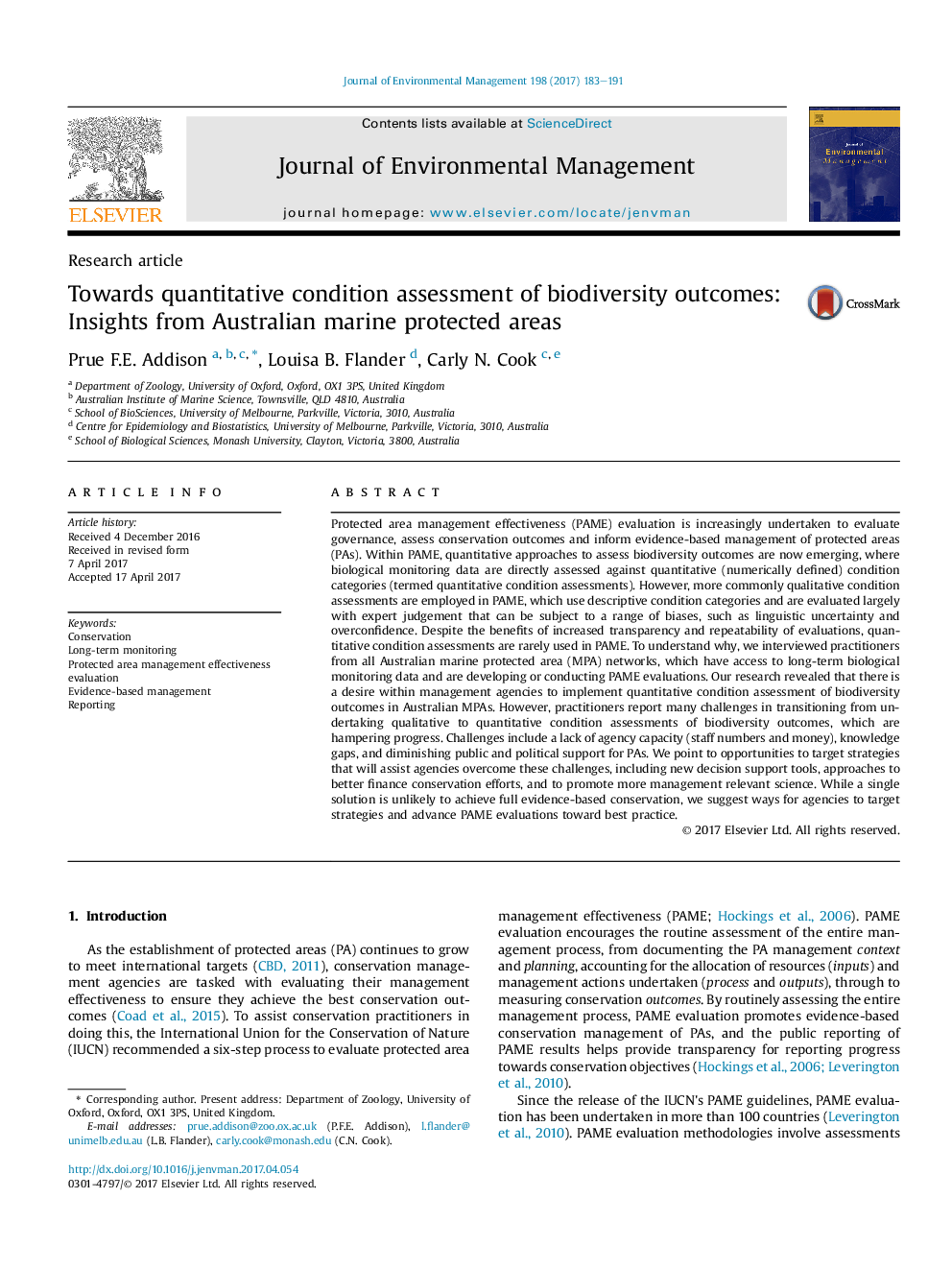| کد مقاله | کد نشریه | سال انتشار | مقاله انگلیسی | نسخه تمام متن |
|---|---|---|---|---|
| 5116742 | 1378105 | 2017 | 9 صفحه PDF | دانلود رایگان |
عنوان انگلیسی مقاله ISI
Towards quantitative condition assessment of biodiversity outcomes: Insights from Australian marine protected areas
ترجمه فارسی عنوان
به سمت ارزیابی وضعیت کمی از نتایج تنوع زیستی: بینش از مناطق حفاظت شده دریایی استرالیا
دانلود مقاله + سفارش ترجمه
دانلود مقاله ISI انگلیسی
رایگان برای ایرانیان
کلمات کلیدی
حفاظت، نظارت بلند مدت، ارزیابی اثربخشی مدیریت منطقه حفاظت شده، مدیریت مبتنی بر شواهد، گزارش نویسی،
موضوعات مرتبط
مهندسی و علوم پایه
مهندسی انرژی
انرژی های تجدید پذیر، توسعه پایدار و محیط زیست
چکیده انگلیسی
Protected area management effectiveness (PAME) evaluation is increasingly undertaken to evaluate governance, assess conservation outcomes and inform evidence-based management of protected areas (PAs). Within PAME, quantitative approaches to assess biodiversity outcomes are now emerging, where biological monitoring data are directly assessed against quantitative (numerically defined) condition categories (termed quantitative condition assessments). However, more commonly qualitative condition assessments are employed in PAME, which use descriptive condition categories and are evaluated largely with expert judgement that can be subject to a range of biases, such as linguistic uncertainty and overconfidence. Despite the benefits of increased transparency and repeatability of evaluations, quantitative condition assessments are rarely used in PAME. To understand why, we interviewed practitioners from all Australian marine protected area (MPA) networks, which have access to long-term biological monitoring data and are developing or conducting PAME evaluations. Our research revealed that there is a desire within management agencies to implement quantitative condition assessment of biodiversity outcomes in Australian MPAs. However, practitioners report many challenges in transitioning from undertaking qualitative to quantitative condition assessments of biodiversity outcomes, which are hampering progress. Challenges include a lack of agency capacity (staff numbers and money), knowledge gaps, and diminishing public and political support for PAs. We point to opportunities to target strategies that will assist agencies overcome these challenges, including new decision support tools, approaches to better finance conservation efforts, and to promote more management relevant science. While a single solution is unlikely to achieve full evidence-based conservation, we suggest ways for agencies to target strategies and advance PAME evaluations toward best practice.
ناشر
Database: Elsevier - ScienceDirect (ساینس دایرکت)
Journal: Journal of Environmental Management - Volume 198, Part 1, 1 August 2017, Pages 183-191
Journal: Journal of Environmental Management - Volume 198, Part 1, 1 August 2017, Pages 183-191
نویسندگان
Prue F.E. Addison, Louisa B. Flander, Carly N. Cook,
